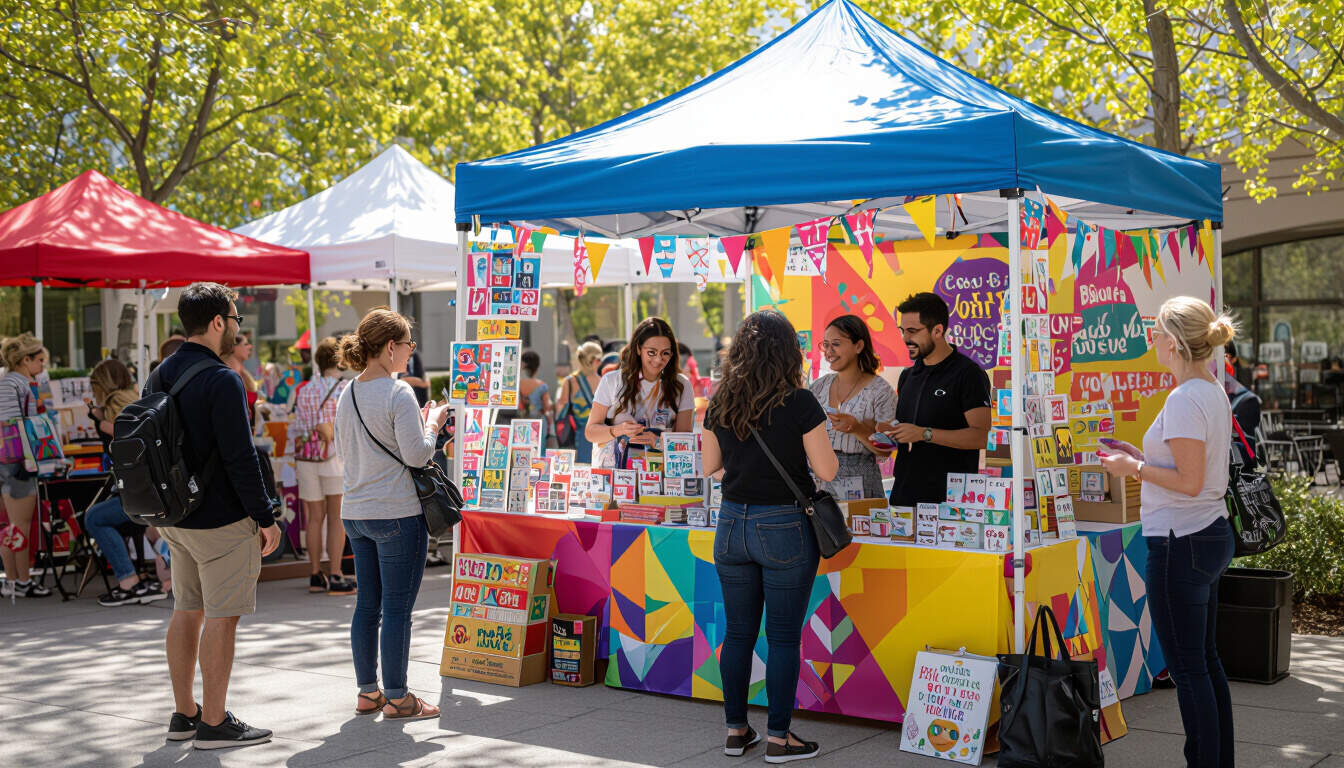Harnessing Engaging Pop-Up Events for Guerrilla PR in Niche Markets
 by Lilian Nienow
by Lilian Nienow
Discover how pop-up events serve as a dynamic tool for guerrilla PR, helping small businesses and entrepreneurs in niche markets build buzz and connect with audiences in fresh ways. Learn practical strategies to create memorable experiences that drive brand growth.

Pop-up events have emerged as a vital approach for brands in niche markets. These temporary gatherings offer a way to capture attention and foster direct engagement with potential customers. For small business owners, pop-up events provide an affordable method to showcase products without long-term commitments.
In the context of guerrilla PR, these events stand out by using surprise and creativity to make an impact. They allow entrepreneurs to turn ordinary spaces into interactive hubs that draw in crowds. A well-planned pop-up can generate word-of-mouth promotion, which is essential for brands with limited budgets.
Why Pop-Up Events Work for Niche Markets
One key advantage is their ability to target specific audiences. For instance, a local artisan selling handmade jewelry might set up in a community center where art enthusiasts gather. This focused approach helps build loyalty and creates a sense of exclusivity.
Another benefit involves the element of novelty. Guerrilla PR tactics like these rely on innovation to stand out. By hosting an event in an unexpected location, businesses can spark curiosity and encourage sharing on social platforms.
Consider the setup process. Start by identifying your goals, such as increasing brand awareness or gathering leads. Choose a location that aligns with your niche, like a park for outdoor gear or a cafe for gourmet foods. Keep the event simple yet interactive, with activities that involve participants directly.
Planning and Executing Effective Pop-Up Events
To begin, select a theme that resonates with your audience. Themes can include product demonstrations or workshops that add value. For example, a tech startup in the fitness niche might host a quick session on healthy living tips.
Timing is crucial. Schedule events during peak hours or special occasions to maximize foot traffic. Promote them through email lists and social media to build anticipation without heavy spending.
Here are some steps to follow:
- Research your audience to ensure the event appeals to their interests.
- Prepare interactive elements, such as giveaways or live demos, to keep energy high.
- Measure success by tracking attendance and feedback to refine future efforts.
Engagement is at the heart of these events. Encourage attendees to participate in polls or contests, turning passive observers into active advocates. This not only boosts immediate interest but also supports long-term brand growth.
Real-World Applications
Many small businesses have succeeded with this strategy. A boutique coffee roaster, for example, used a pop-up at a farmers' market to offer free samples. This led to increased sales and a stronger online presence through customer photos.
For marketers in niche sectors like eco-friendly products, pop-ups create opportunities for storytelling. By sharing the brand's story through displays and talks, they connect on a personal level, which traditional advertising often misses.
Entrepreneurs can adapt these ideas to their needs. If you're in the book publishing niche, set up a pop-up library where people swap books and discuss favorites. Such events foster community and enhance visibility.
Overcoming Challenges
While pop-ups offer great potential, they come with obstacles. Limited space might restrict attendance, so opt for versatile venues. Weather can also play a role for outdoor events, making indoor alternatives a smart backup.
Budget constraints are common, but guerrilla PR emphasizes resourcefulness. Use low-cost materials and volunteer help to keep expenses down. Focus on creativity rather than scale to achieve meaningful results.
In summary, pop-up events represent a smart choice for guerrilla PR in niche markets. They enable small business owners and marketers to innovate and engage directly with audiences. By applying these tactics, entrepreneurs can drive growth in competitive environments.
To wrap up, always review what worked and what didn't. This iterative process ensures that each event builds on the last, helping your brand evolve and thrive.
